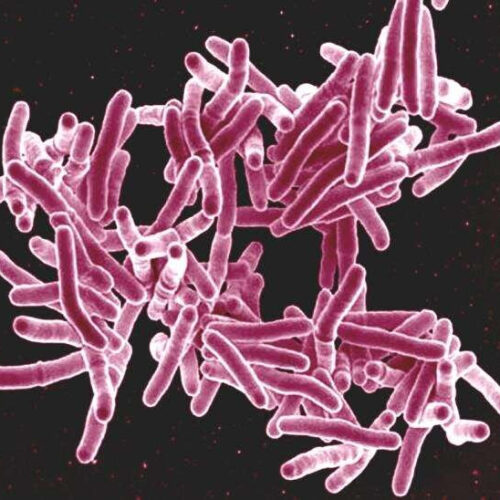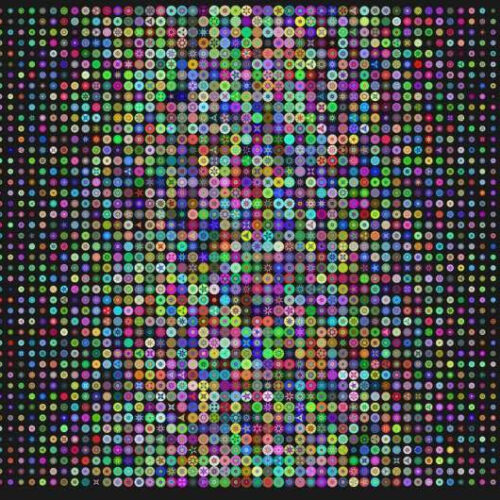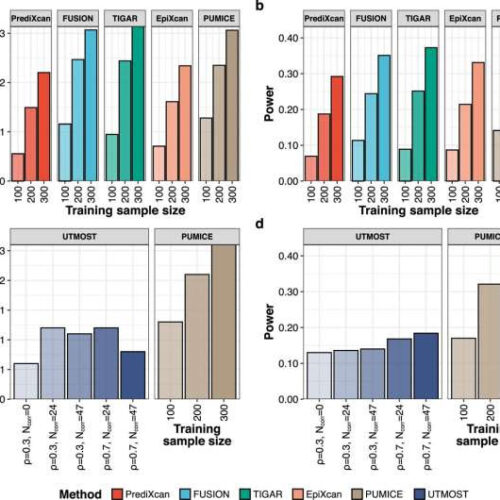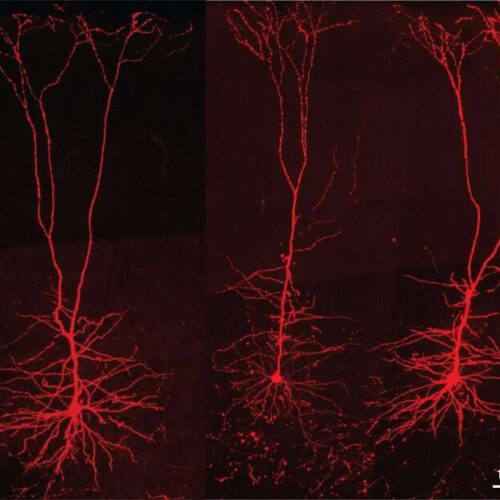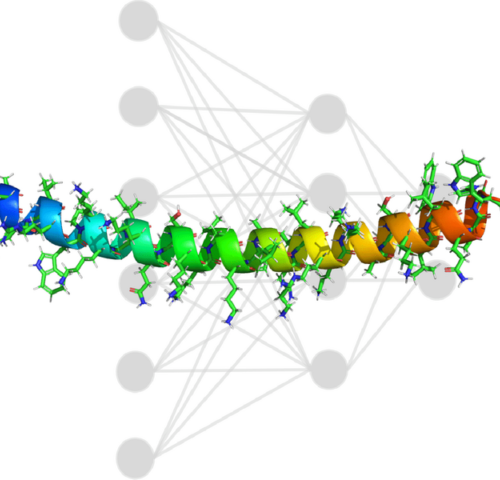by University of Helsinki Mutational signatures of formalin exposure. a C>T FFPE-only mutation count increases with formalin fixation time. We observed this increase in both unrepaired and repaired-FFPE samples from study 1 (the fixation group). FFPE-only mutations refer to mutations that are only discovered in FFPE but not in FF samples or known germline databases....
Tag: <span>Machine learning</span>
Machine learning begins to understand the human gut
The communities formed by human gut microbes can now be predicted more accurately with a new computer model developed in a collaboration between biologists and engineers, led by the University of Michigan and the University of Wisconsin. The making of the model also suggests a route toward scaling from the 25 microbe species explored to the thousands...
Machine learning model helps identify resistance to key antibiotics for treating tuberculosis
by Yale School of Public Health Scanning electron micrograph of Mycobacterium tuberculosis bacteria, which cause TB. Credit: NIAID Tuberculosis (TB) continues to be one of the top ten leading causes of death worldwide, with more than 1.3 million reported deaths in 2020. The emergence and spread of drug-resistant forms of the disease have complicated the control of TB...
Machine-learning algorithms can help correctly diagnose alcohol-associated hepatitis, acute cholangitis
by Mayo Clinic Credit: CC0 Public Domain Acute cholangitis is a potentially life-threatening bacterial infection that often is associated with gallstones. Symptoms include fever, jaundice, right upper quadrant pain, and elevated liver enzymes. While these may seem like distinctive, telltale symptoms, unfortunately, they are similar to those of a much different condition: alcohol-associated hepatitis. This challenges emergency...
New machine learning technique shows how drugs can be repurposed
by Penn State College of Medicine Simulation studies comparing the performance of PUMICE to other TWAS methods. Panels (a, b) illustrates the comparison of PUMICE to other single-tissue TWAS methods for type I error (a) and power (b). Panels (c, d) illustrates the comparison of PUMICE to multi-tissue TWAS method (UTMOST) for type I error...
How our brain processes and stores movement has implications for multiple diseases, machine learning
by Technion – Israel Institute of Technology hree pyramidal nerve cells in the motor cortex, whose job it is to send the motor commands directly to the spinal cord. These are the cells studied in Prof. Schiller’s current study. The cells are characterized by a pyramidal shape of the cell bodies and highly branched dendritic...
The downside of machine learning in health care
Assistant Professor Marzyeh Ghassemi explores how hidden biases in medical data could compromise artificial intelligence approaches. While working toward her dissertation in computer science at MIT, Marzyeh Ghassemi wrote several papers on how machine-learning techniques from artificial intelligence could be applied to clinical data in order to predict patient outcomes. “It wasn’t until the end of my PhD work...
Eye movements and machine learning reveal signs of illness
DTU machine learning algorithm analyzes patterns in eye movements in patients with neurological and psychiatric disorders and helps in diagnosis. The ability to make eye contact with other people is an important part of our social interaction with each other. Among other things, we read joy, trust, and interest through eye contact, but we also look at...
Machine-learning system flags remedies that might do more harm than good
by Adam Zewe, Massachusetts Institute of Technology A new machine-learning system could give physicians risk scores for different treatments. Credit: Christine Daniloff, MIT Sepsis claims the lives of nearly 270,000 people in the U.S. each year. The unpredictable medical condition can progress rapidly, leading to a swift drop in blood pressure, tissue damage, multiple organ...
Machine learning discovers new sequences to boost drug delivery
MIT researchers employ machine learning to find powerful peptides that could improve a gene therapy drug for Duchenne muscular dystrophy. Duchenne muscular dystrophy (DMD), a rare genetic disease usually diagnosed in young boys, gradually weakens muscles across the body until the heart or lungs fail. Symptoms often show up by age 5; as the disease progresses, patients...


